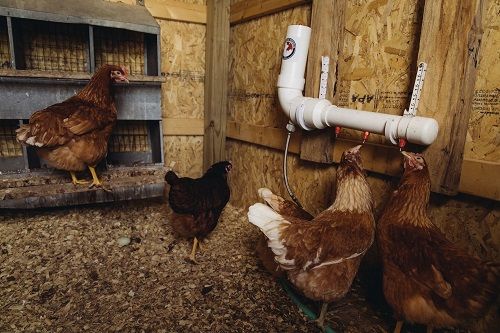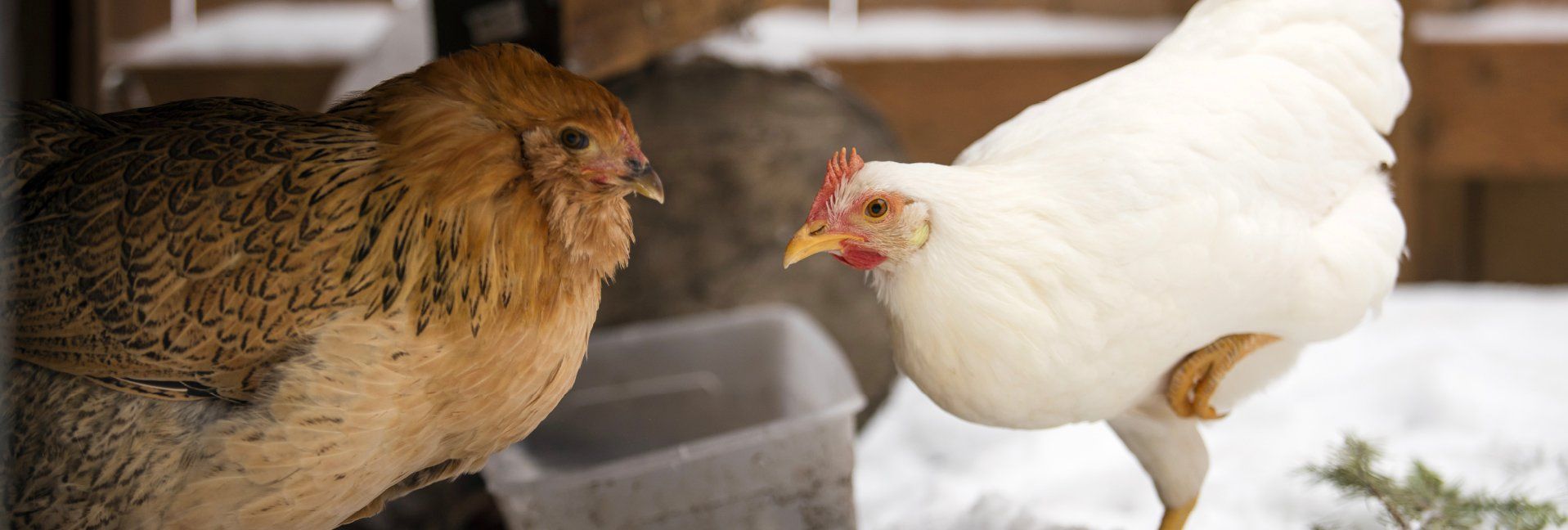Heat Stress and Chickens
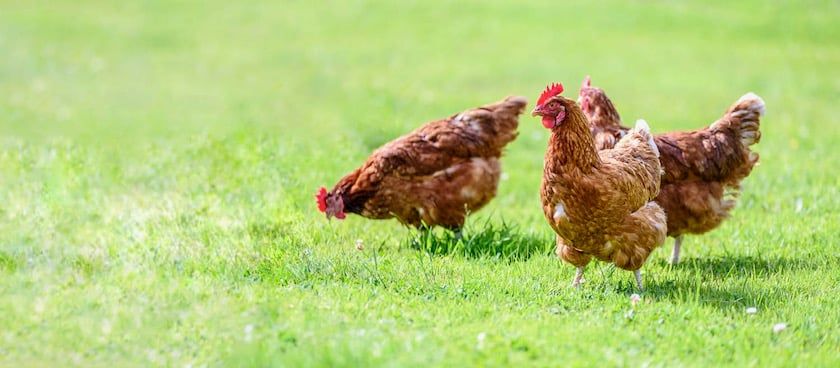

Did you have reduced egg production or lose chickens this summer?
The culprit is probably heat stress.
Yes, this summer was a hot one, and as of this writing, it ain’t over yet.
As summer progresses and the temperature rises, we are always concerned about the effects of heat on our chickens. While chickens and other birds are resilient to most weather conditions, they can really feel the effects of warmer weather.
Chickens undergo heat stress when their body temperature rises uncontrollably due to humidity and temperature.
In the zone
For all animals, the temperature range where the organism is most comfortable is called the thermoneutral zone. At this temperature, chickens do not have to expend energy to either keep themselves warm or to cool themselves off. For chickens this zone is between 60° and 75° F.
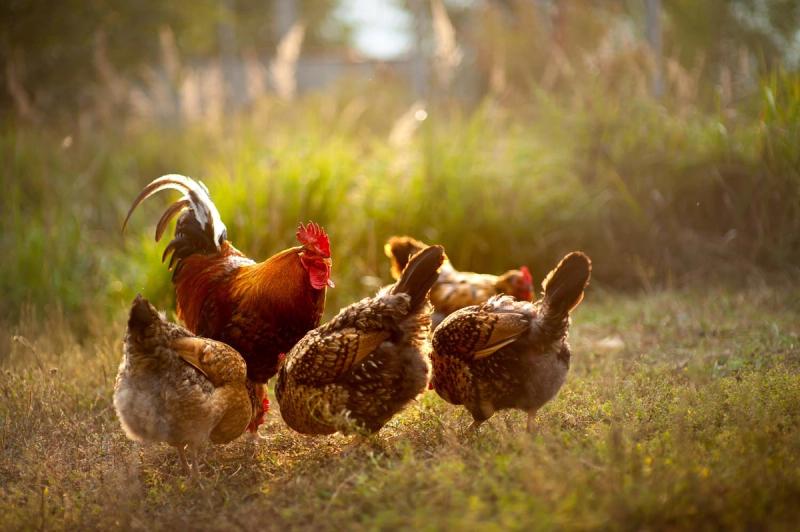
As temperatures increase above this zone, the birds will have to use different behaviors to maintain their core body temperatures. Heat-stressed birds will exhibit several of these behaviors to help cool themselves off.
The most obvious of these behaviors is panting—chickens pant like dogs as a means to cool themselves off because they lack the ability to sweat. Panting is their most effective way to release excess body heat, as the birds pant the release hot moist air from their bodies. This air is removed from the chicken through evaporative cooling.
Other noticeable behaviors include raising wings away from the body, this helps to release heat trapped by their feathers.
Who wants to eat?
Chickens will also decrease feed intake. Digestion and an active metabolism produce heat and therefore increase body temperature. So, often times during hot weather chickens will consume less feed.
Like all animals, chickens will increase water intake, especially if the water is cooler. Chickens can drink up to 4 or 5 times their normal intake during times of extreme heat stress.
As temperatures rise above 85° F., you will see these behaviors in increasing amounts. As temperatures rise above 100° F. chickens will begin to show signs of severe heat stress.
If mitigation practices are not put into place chickens will succumb to heat stroke over 100° F.
It’s also the humidity
Now, these temperatures are not exact and will vary depending on relative humidity. As humidity increases, a chicken’s ability to maintain its body temperature declines sharply. A relative humidity above 50% can significantly decrease a chicken’s ability to cool itself off.
Over 75% and chickens lose almost all of the ability to cool themselves through panting. The deadliest combination of course is high temperature and high humidity. In these conditions it is extremely hard for chickens to maintain their core body temperatures.
In chickens, panting causes a release of carbon dioxide and changes in the acid-base balance of blood. Even slight changes in blood pH can lead to death.
Add a bicarb buffer
To mitigate these effects chickens use the bicarbonate buffer system. While an effective system, it can lead to both short and long term effects, most notably soft-shelled eggs. Egg shell is made from calcium carbonate, if carbonate is depleted due to heat stress then you will start to see an increasing number of soft shelled eggs.
Thankfully, once the heat stress is gone and the birds are recovering they will lay normal eggs again. To help facilitate recovery, sodium bicarbonate is sometimes added to feed; carbonated water can be given to the chickens to help replenish their stores of bicarb.
Make it right, make it comfortable
As with every ailment, an ounce of prevention is worth a pound of cure. Fortunately, there are several management practices that you can use to help your chickens during times of high heat.
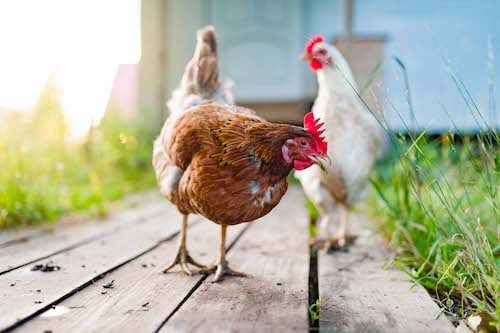
First and foremost is providing cool, clean, and fresh water at all times. As mentioned earlier chickens can consume 4 or 5 times as much water during times of heat stress. Electrolytes can be added to the water to help, as well as giving vitamins A, D, E, and B to help mitigate the effects of warm weather.
Vitamin C can be used in laying hens to help with egg production. Providing shade for pastured poultry allows them to get out of direct sunlight and can reduce the felt temperature by 10 to 15 degrees.
Providing ventilation and air movement in these shaded areas can reduce the air temperature even further.
Adding misters can also reduce the effects of heat stress by providing some added evaporative cooling to the birds.
Do the right thing
Heat stress is a common ailment in chickens around this time of year, especially late summer and early fall. While there are varying degrees from slight to hypothermia and eventual death, a few easy practices can help reduce the effects of warmer weather on your chickens.
The easiest and most effective practice is to provide:
- Cool, clean water at all times
- Ventilation
- Shaded areas
You also need to learn to recognize the early signs of heat stress, primarily that panting, and the heavier the panting the worse the heat stress. After that, watch for elevated wings, and eventually the birds will become lethargic and then non-responsive if no corrective measures are taken.
Being able to correct the situation at the earliest time will provide the most help for your chickens.
Tags:Hands-on Help

Chicken Whisperer is part of the Catalyst Communications Network publication family.









